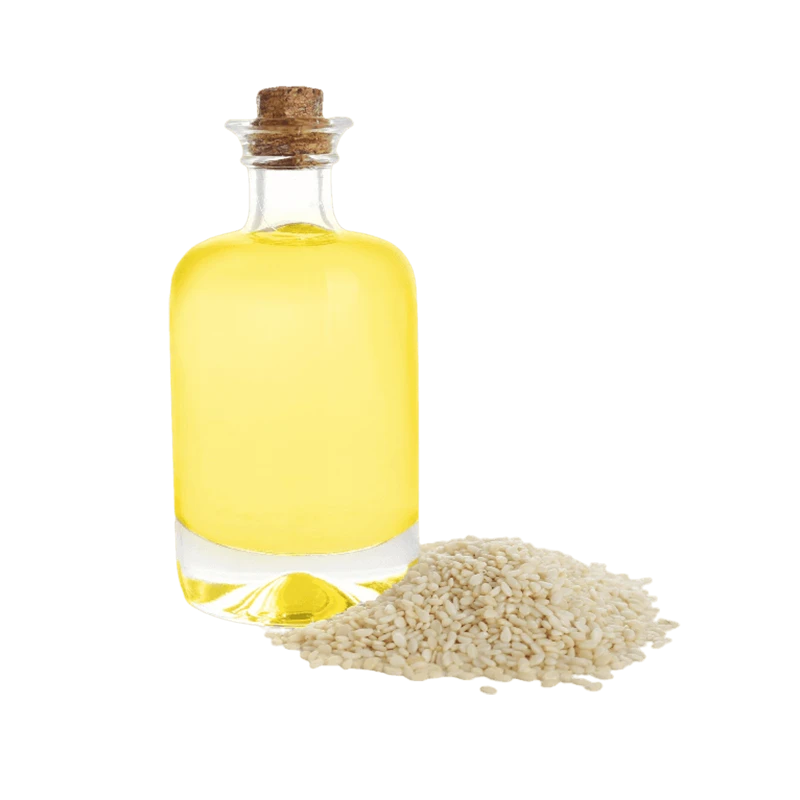Rice Oil — Nutrients, Health Benefits, And Shopping Tips

Written by Listonic Team
Last update on September 4, 2024
Rice oil nutrients
Nutrition facts
Amount per 100 g
Calories
🔥 884 kcal
| Nutrition per: 100 g | Value | % Daily Value* |
|---|---|---|
| Carbs | 0 g | - |
| Fiber | 0 g | - |
| Sugars | 0 g | - |
| Glycemic Index | 0 | - |
| Protein | 0 g | - |
| Sodium | 0 mg | - |
| Total Fat | 100 g | 128.21% |
*The % of Daily Value (DV) tells you how much a nutrient in a serving of food contributes to a daily diet. 2,000 calories a day is used for general nutrition advice.
Rice oil facts & tips
Health benefits
- Rich in healthy fats such as monounsaturated and polyunsaturated fats, which support heart health by reducing bad cholesterol levels.
- High in antioxidants such as Vitamin E and gamma-oryzanol, which help protect the body from free radicals and reduce inflammation.
- Contains essential vitamins and minerals such as Vitamin K and phosphorus, which support overall health and well-being.
- Versatile cooking oil with a high smoke point, making it suitable for frying, baking, and sautéing.
Health risks
- High carbohydrate content which can cause rapid spikes in blood sugar levels, particularly concerning for diabetics when consumed in large quantities.
- Low nutrient density as rice noodles are primarily made from refined rice flour, offering limited vitamins or minerals compared to whole grains.
- Potential for overconsumption due to their palatable nature, leading to excessive calorie intake if not mindful of portion sizes.
- Potential for gluten cross-contamination in some manufacturing processes, which can be an issue for individuals with celiac disease or gluten sensitivity.
How to choose rice oil
High-quality rice oil should be clear with a light golden hue and have a neutral taste, making it suitable for various cooking methods. The oil should not smoke at low temperatures, indicating a high smoke point.
Avoid rice oil that smells rancid or has particles settled at the bottom, as this can indicate oxidation or poor storage conditions. Cloudy oil should also be avoided, as it may affect the flavor and quality of your dishes.

How to store rice oil
Rice oil should be stored in a cool, dark place, preferably in a tightly sealed bottle. Proper storage helps maintain its quality for up to six months. Keeping it away from light and heat extends its shelf life.
Exposure to air and light can cause rice oil to go rancid. Avoid storing it near the stove or in direct sunlight. Ensuring the bottle is tightly closed prevents oxidation and maintains its flavor.
✅ Extra Tip
How long does it last?
Rice oil can last for 6-12 months when stored in a cool, dark place. Once opened, it is best to consume it within 6 months for optimal quality. Proper storage helps maintain its flavor and nutritional value.
What to do with leftovers?
Leftover rice oil, also known as rice bran oil, can be used in a variety of culinary and non-culinary ways. In the kitchen, rice oil is ideal for frying, sautéing, and making dressings due to its high smoke point and neutral flavor. It’s commonly used in Asian cuisine for stir-frying and tempura, as well as in salads and marinades.
Beyond cooking, rice oil has several practical uses. It’s often used in DIY beauty treatments as a natural moisturizer for the skin, helping to hydrate and soften. Rice oil can also be used in hair care to add shine and reduce frizz, or as a massage oil for its light texture and nourishing properties. Additionally, rice oil can be applied to wooden utensils and cutting boards to help maintain their condition and prevent drying out. In traditional medicine, rice oil is sometimes used as a natural remedy for soothing skin irritations or as a base for herbal infusions.
👨⚕️️ Medical disclaimer
Discover products from other categories
Listonic Team
Fact-checked
Our editorial team checked this article to make sure it was accurate at the time of publishing it.
Get the top-rated shopping list app on your phone!







